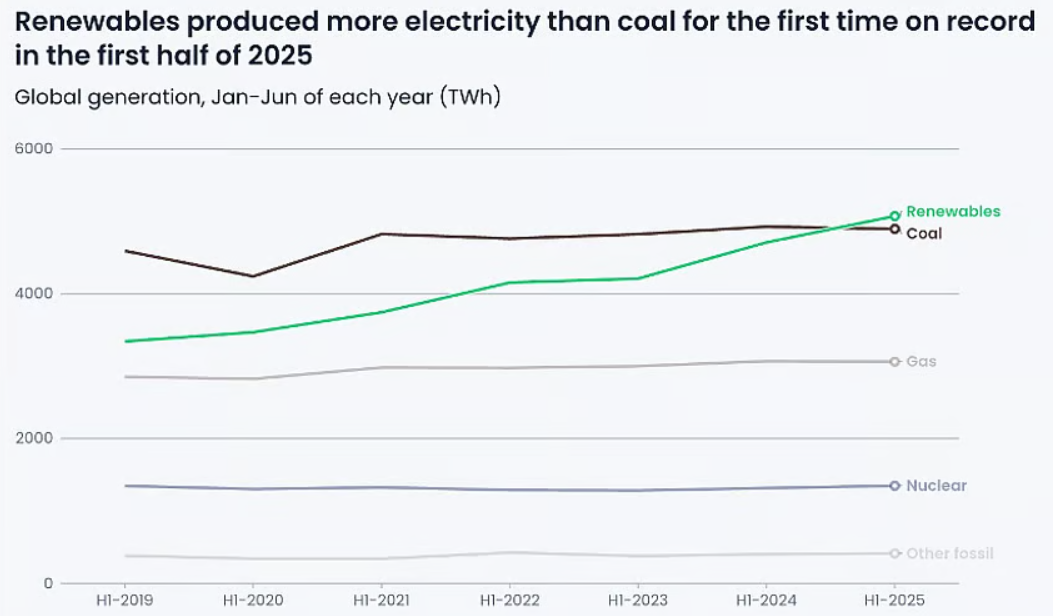PREVIOUS
World’s Largest Electricity Source
October 13 , 2025
14 hrs 0 min
27
0
- In the first half of 2025, renewable energy became the world’s leading source of electricity, overtaking coal for the first time.
- Solar and wind power met 100% of global electricity demand growth, even causing a slight drop in coal and gas usage.
- China led the clean energy expansion, adding more solar and wind capacity than the rest of the world combined, reducing its fossil fuel generation by 2%.
- India also added significant solar and wind capacity, offsetting slower demand growth and cutting back on coal and gas use.
- In contrast, the US and EU increased fossil fuel reliance due to weaker clean energy growth and poor wind and hydro output.
- The International Energy Agency (IEA) halved its US renewable capacity forecast for 2030 from 500 GW to 250 GW due to policy changes.
- Solar prices have dropped 99.9% since 1975, driving rapid adoption in developing countries, especially in Africa and South Asia.
- Pakistan doubled solar imports in 2024.
- Nigeria overtook Egypt in solar capacity, and countries like Zambia and Algeria saw exponential growth.
- Rapid solar expansion is causing new challenges; in Afghanistan, widespread solar-powered water pumps are depleting groundwater levels.
- China remains the dominant global player in clean tech exports, hitting a record $20 billion in August 2025, led by electric vehicles and batteries.

Leave a Reply
Your Comment is awaiting moderation.


